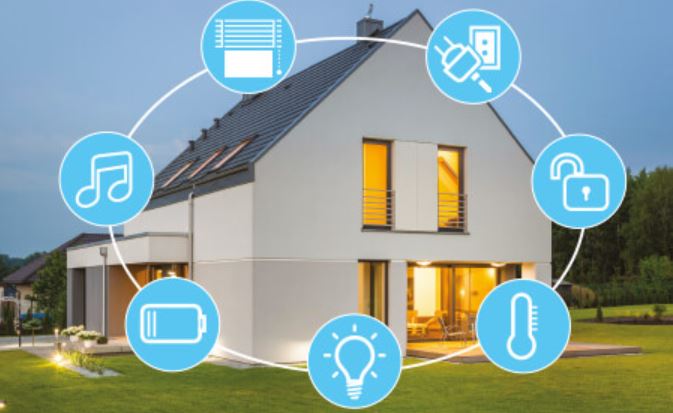
When you think of a smart home what comes to mind?
Lee Gatimu, who runs an electronics firm, says what gives a home smart status is technology, specifically its connectivity and automation.
“Home automation upgrades your home to smart. It allows what used to be ‘dumb’ devices such as lamps, doors, sprinkler, blinds, appliances, AC and even your mattress to intelligently perform actions based on conditions you set, communicating with one another through a smart hub and hooked up to a remotely controllable network,” he says.
But clapping to dim the lights is not just a feature to impress your visitors, it can save you money too while making your work a lot easier.
And at a time many of us are working from home, it is vital to know what a smart home is, which smart device is worth buying and what steps to consider to connect your home.
So, which is the best smart home hub?
There is no single best smart home platform.
However, there are quite a few good options available from Amazon Echo to the Google Home, but all of them have upsides as well as downsides.
The most important factors to consider are functionality, cross-compatibility and versatility for future upgrades, ease of use and ease of installation.
“If you’re just dipping your toes into this smart home thing, you might consider avoiding smart hubs altogether and syncing everything through a smart speaker instead. The Google Home Mini and Echo Dot are great starter options,” says Mr Gatimu.
Both the Echo Dot and the Home Mini retail for about Sh6,000, he says.
Google Home, Nest Mini and Home Max are all wi-fi speakers that double up as smart home control hubs and personal assistants that are easily available in Kenya.
If you have already invested in Amazon’s ecosystem, make sure the devices you buy are compatible.
Speak into it
Stay informed. Subscribe to our newsletter
You probably already have speakers in your home. We are, however, not talking of an ordinary speaker. You need a smart speaker to control your phone hands-free and use it as the heart of the smart home.
Since 2017, the smart speaker market has been developing rapidly. With a Google Home Mini, for instance, you will use the Google Home app to manage your devices. From there, you can set up shortcuts and routines, as well as identify rooms around the house.
Today we have a wide range of these speakers such as Google’s Alexa, Apple’s Homepod and Amazon’s Echo that let you make phone calls, send messages, play music, set alarms and many other tasks just by speaking.
You can shout demands like, “Turn up the volume!” to the device instead of your significant other.
Vacuum the smart way
Stop cleaning and start living, with a robot. Robot vacuums are among the first things to buy when building a smart home.
Instead of spending countless hours brushing carpets of pet fur or dust with a hand-held vacuum, robot cleaners will do that on every inch of your room.
“It is connected to your smart speaker, so all you have to do is say ‘clean the house’, for example, and it turns on and starts cleaning,” says Gatimu.
“They are especially good for tiled houses. They can map your house, identify furniture, carpets and other obstacles and avoid them.”
The vacuums have powerful suctioning paired with a floating rolled brush. As such, they can transfer smoothly between different types of flooring.
You can also switch between vacuuming and mopping for complete freedom from cleaning your floors. And that is not all: You can make it smarter by connecting your smart vacuum to your smart home hub for voice control.
Smart security
If you were not keen about home security, now is the time. Even in a historically safe neighbourhood, it has become increasingly important to take measures to improve the security of your family.
Installing smart security cameras on the exterior and interior of the house allows homeowners to see a live feed of what is happening at home from wherever they are.
“I have sold all kinds of cameras. Some have motion detectors and will alert you when they sense there is someone around. Others are equipped with facial recognition,” says Gatimu.
“For indoor cameras, some people prefer them not to be fixed on the wall even as just a statement that ‘I see you’.”
Some advanced systems let you programme every single TV in your home to react by pulling up your security cameras when the alarm is triggered, including your video doorbell camera, and you will know exactly where the intrusion occurred.
Since 2018 Xiaomi have been quite successful in penetrating the Kenyan market because they offer high tech for low, affordable prices. For instance, there is the Xiaomi Mi Home Security Camera. Boasting Full HD recording, a 130-degree angle lens, a 10 metre infrared range, night vision, intelligent detection and two-way voice communication, this device allows you to even remotely check if your baby is sleeping well during the night!
You also do not need a lot of cameras. Just make sure you cover the most vulnerable areas including the front, rear and the main areas inside your home such as the living room.
Light it up
Remember when coloured bulbs came to the market and everyone thought they were revolutionary? The hype soon died when we realised you had to commit to that one colour once bought. But smart lights are changing everything.
“With smart home bulbs, you can pair your lights with your alarm to wake you up to a soft green glow. Or maybe you’d like to pair your bulbs to your evening music to set the mood,” Gatimu says.
“This way, you can have your lights set to the perfect colour to match your mood or energy level,” he adds.
Gatimu says companies such as Xiaomi sell LED strips that you can install behind your TV set or surrounding your bed that you control with an app.
Smart bulbs that go for about Sh1,800 give you the freedom to turn lights on and off while still lying in bed by telling your Amazon Echo or Google Home to turn stuff off.
Then there are routines. You can set your lights with a touch of a button to automatically come on at 5:30am and off at 6am during a work day instead of commanding the device every morning.
“For the bedroom, you can tell Google ‘start my day’ and it will turn on your bedroom light, tell you the weather then tune into a radio station you like listening to while the smart kettle in the kitchen also turns on,” says Gatimu.
Once you taste the convenience of a smart home, he says, there is no turning back.
Get plugged in
They are smarter than the average plug because they let you control your appliances from an app on your phone. These nifty devices even let you set schedules for your smart plugs so you can turn appliances on and off at set times and on specific days.
Not only that, they also collect information about how much energy the appliance uses.
“Sometimes you may not want to let unwanted guests to know you are not at home, so you connect your lamp to a smart socket to turn on at certain times at night. This may also ward off intruders with the illusion of activity,” adds Gatimu.
It goes deeper than comfort. If you leave your iron on or are not sure that you switched it off, you do not need to rush back home in a panic. Just take your phone out and switch your plugs off.
The plugs range from Sh4,000 to Sh10,000, depending on the brand.
Other smart appliances
There are countless other devices that have come up in this competitive space that offer all the convenience imaginable.
You can get a 360 smart bed that intelligently senses your every move, automatically adjusting firmness, comfort and support on each side for all the beauty sleep that money can buy.
Amazon’s ring is another on-demand device that is not available in Kenya yet, but is on the company’s bestseller list. It sends notifications when a visitor’s motion is sensed near the door. You can even hear and talk back through it, even if you are not at home.
If you wish to turn your TV into a smart one, you can use an Mi TV stick, a small device that plugs into the HDMI port and connects to the internet via your Wi-Fi connection.
For Sh5,000, you can download thousands of apps and stream using your TV. Amazon Fire Stick does similar functions for slightly more cash. But you get Fire TV OS instead of Android TV and Alexa in lieu of Google Assistant.
No matter which devices you choose to incorporate, the best way to look at a smart home remains the value it delivers.
[email protected]
 The Standard Group Plc is a
multi-media organization with investments in media platforms spanning newspaper
print operations, television, radio broadcasting, digital and online services. The
Standard Group is recognized as a leading multi-media house in Kenya with a key
influence in matters of national and international interest.
The Standard Group Plc is a
multi-media organization with investments in media platforms spanning newspaper
print operations, television, radio broadcasting, digital and online services. The
Standard Group is recognized as a leading multi-media house in Kenya with a key
influence in matters of national and international interest.
 The Standard Group Plc is a
multi-media organization with investments in media platforms spanning newspaper
print operations, television, radio broadcasting, digital and online services. The
Standard Group is recognized as a leading multi-media house in Kenya with a key
influence in matters of national and international interest.
The Standard Group Plc is a
multi-media organization with investments in media platforms spanning newspaper
print operations, television, radio broadcasting, digital and online services. The
Standard Group is recognized as a leading multi-media house in Kenya with a key
influence in matters of national and international interest.









